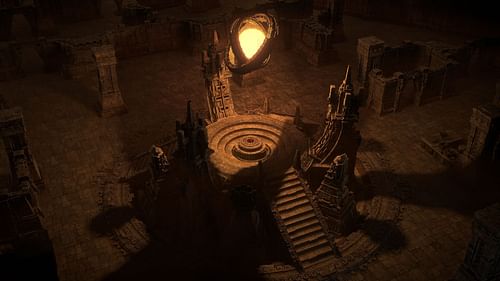
Path of Exile 2 Atlas system, explained
Atlas of Worlds is returning as the primary endgame feature of Path of Exile 2, refining multiple mechanics from the original, while combining and potentially omitting others from the pool. Compared to Path of Exile, PoE2's Atlas is much more complex and has multiple facets to upgrade and upkeep for the maximum farming potential of each map.
Path of Exile 2 has foregone most of the standard mapping philosophies from the original title. For example, maps in Path of Exile 2 are now called Waystones. Furthermore, the Atlas, at large, is seemingly themed around larger areas than individual maps — aimed at introducing map variety. The latest GGG Live has expanded upon the Atlas system in great detail, which we will discuss below.
What is happening to Path of Exile 2's Atlas system?
As mentioned above, Waystones play a much greater role in the Atlas system than Path of Exile's maps. In Path of Exile 2, Waystones are modifiable individually but the Atlas can also be modified to feed into the system, creating several instances of self-sustaining gameplay mechanics. This gameplay loop will start at the Central Ziggurat and spread infinitely across the land.

Increasing the quality and rarity of a Waystone will ensure map sustainability. These Waystones are modifiable with normal currency items such as Orbs of Transmutation, Orbs of Alteration, Regal Orbs, etc, but the similarities end there. It seems that in Path of Exile 2, Cartographer's Chisels no longer exist, alongside most of the Eldritch currencies.
Upgrading the Waystones will also increase the difficulty of combat encounters on that specific map. Beyond this, the Waystones will be affected by the larger Atlas area and its associated modifiers, and in true Path of Exile fashion, the Atlas itself will be modifiable.
The Atlas modification will begin with Atlas Passive Skill Points, which can be invested in the larger Atlas Passive Skill Tree. This tree can increase all aspects of the Atlas, such as drop quantity, chances to spawn certain encounters, etc.
Atlas regions are separated into biomes, which indicate what sort of Waystones can be run in those areas. These biomes also affect possible item drops and even dictate which league mechanic can spawn. For example, any biome with a red corrupted ground can potentially spawn beyond mobs after clearing a pack.

Furthermore, these biomes can be affected by Precursor Towers which can also be slotted with items called tablets. These tablets can drop from specific league mechanics, and are modifiable themselves to allow the league mechanics to be self-sustainable and empowered for greater rewards. Precursor Towers also unveil new encounters and locations in previously unexplored areas, so these are paramount in scouting for stronger encounters.
Bossing will receive additional focus, as this will have its progression system. To that end, Path of Exile 2 will not have bosses on each map. Instead, these special enemies will spawn in one out of every four maps, roughly speaking. These bosses are slated to be extremely challenging and subsequently appropriately rewarding, so players have an incentive to chase boss loot.
League mechanics in Path of Exile 2
Alongside, the standard Atlas and Waystones, individual league mechanics are also being changed in Path of Exile 2, often drastically. To explain all of the league mechanics in Early Access will take a long time, so here's the short and sweet of it.

To start off, Path of Exile 2 will have 7 distinct league mechanics in Early Access, which will be expanded upon when the game reaches its full release state. The latest GGG Live expanded upon some of these mechanics, including the intricacies and available player power. According to Game Director Mark Roberts, Path of Exile 2's league mechanics will have individual progression systems like skill trees, acquirable player-power-based gear such as Unique and Special base items, and Atlas-changing gameplay systems.
For example, Breach, Expedition, Delirium, and Ritual are returning from Path of Exile. These mechanics will all have individual skill trees for players to customize their encounters. Furthermore, each mechanic will have unique drops that will help players gain additional character customization such as breach rings and catalysts, omens, etc.
Not stopping there, each league mechanic is also modifiable with tablets that can be slotted into the previously mentioned Precursor Towers. These tablets are themselves modifiable with currencies and can cause self-sustaining loops if modded carefully. Lastly, every league mechanic will have an associated Pinnacle boss fight that will provide Unique drops.

Beyond league mechanics, Path of Exile 2 also promises to bring stand-alone Pinnacle encounters. These bosses can be spotted in specific biomes and have to be fought in sequence. Firstly, the two lieutenants have to be felled, which will unlock the Uber Act boss fights. Upon defeating three Unique Act bosses, players will obtain three keys that will open up a maze where a Unique Pinnacle encounter is slated to take place.
Path of Exile is famous for its depth in the endgame and the sequel promises the same (if not more intricate) by refining its replayability. The developers expect players to reach the endgame by level 65, but it's a much safer bet to over-level when you enter the maps for the first time.